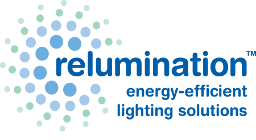It’s well-known that long-term exposure to ultra violet (UV) from the sun causes cumulative damage to the interior structures of the eyes. There are two types of UV that reach the earth: UVA and UVB. UVB is the more energetic of the two with the least penetrating power. It’s responsible for sunburn of the skin and of the outer surface of the eyes (commonly called snow blindness). When you’ve had too much exposure to UVB, you’ll certainly know about it within a few hours.
On the other hand, UVA is the least energetic of the two but has greater penetrating power. Because of this, it’s the most insidious form of UV because even on cloudy days when sunburn risk is low, UVA easily penetrates this cover and damages the eyes in small amounts that leave the victim with no clue that anything happened. It’s only after decades of exposure that problems such as age-related macular degeneration (AMD) and cataracts occur and rob people of their eyesight. In fact, AMD is the most common reason for blindness in the developed world.
It’s often recommended that people always wear sun protection (sunglasses) against all forms of UV when outdoors. However, the danger also exists indoors with some types of lighting such as fluorescent. In fact, a study has shown that fluorescent lighting may increase UV-related eye damage by 12%.
Although the intensity of indoor exposure is less than sun exposure, people typically spend more time indoors, especially at their jobs where fluorescent lighting is commonplace. Cumulative damage from indoor exposure adds to that from outdoor exposure and therefore accelerates the long-term damaging effects of UVA.
An important reason for using indoor fluorescent lights is its improved energy efficiency over incandescent lights. However, this comes at a health cost to the public. One solution to this problem is substituting fluorescent lights with LEDs. LEDs don’t emit UV radiation and are more energy-efficient than fluorescent lighting.
If you are looking to reduce lighting costs at your business, work area, university, or hospital, consider using LEDs over fluorescent lights.
